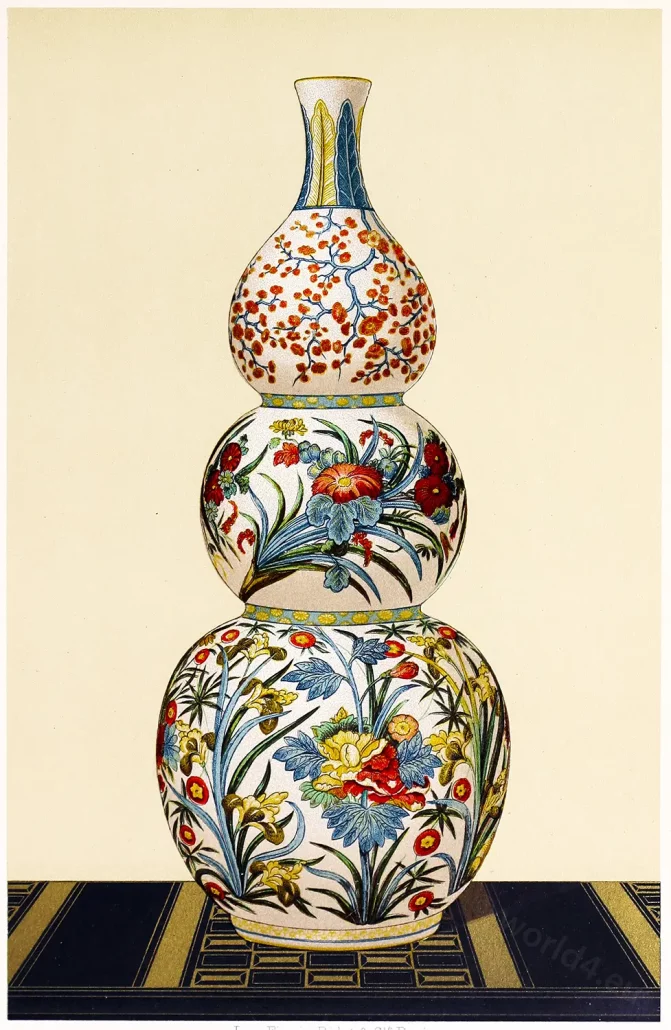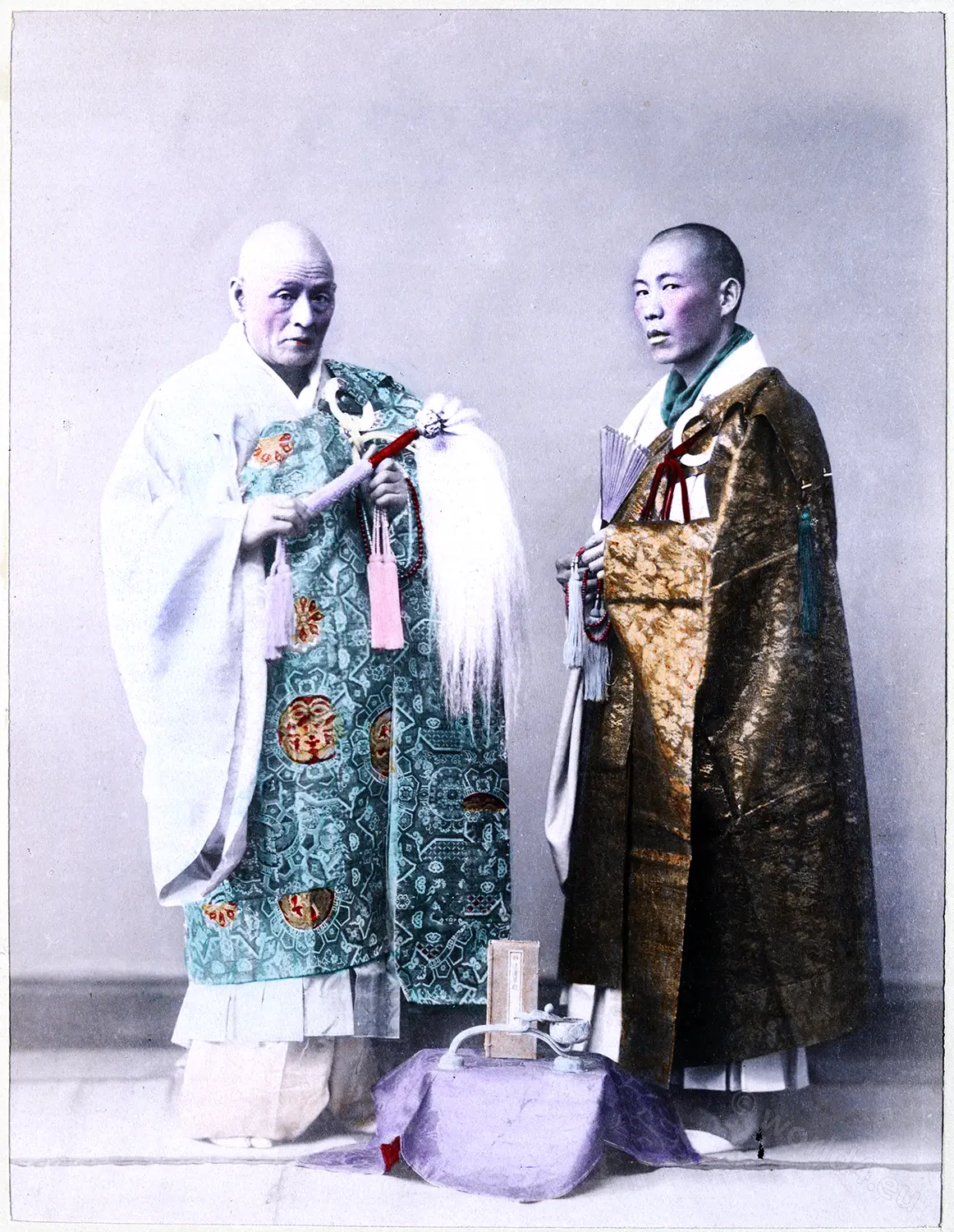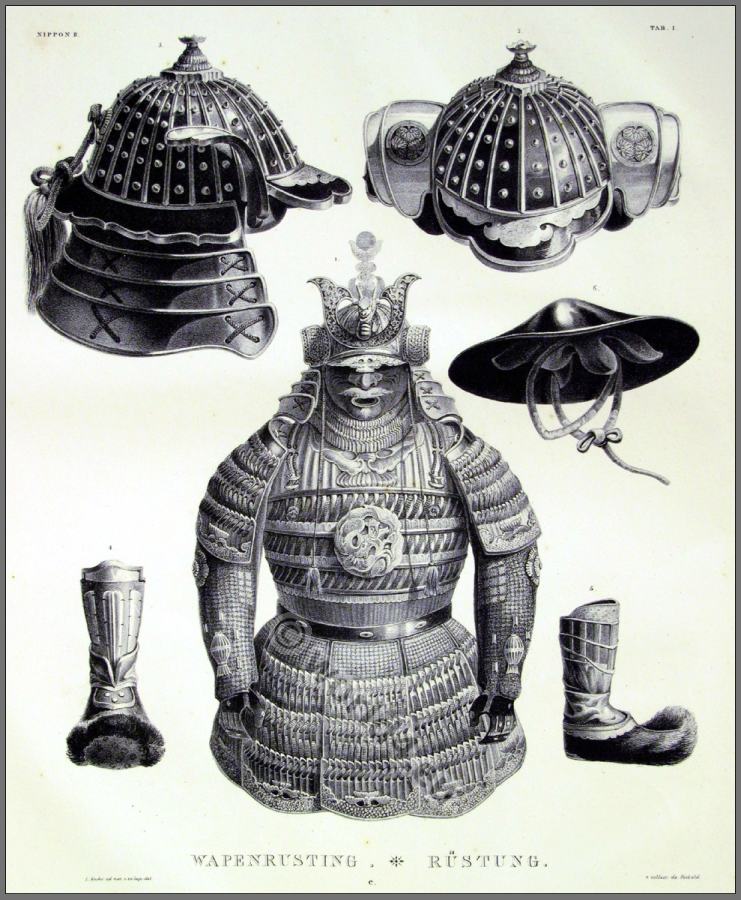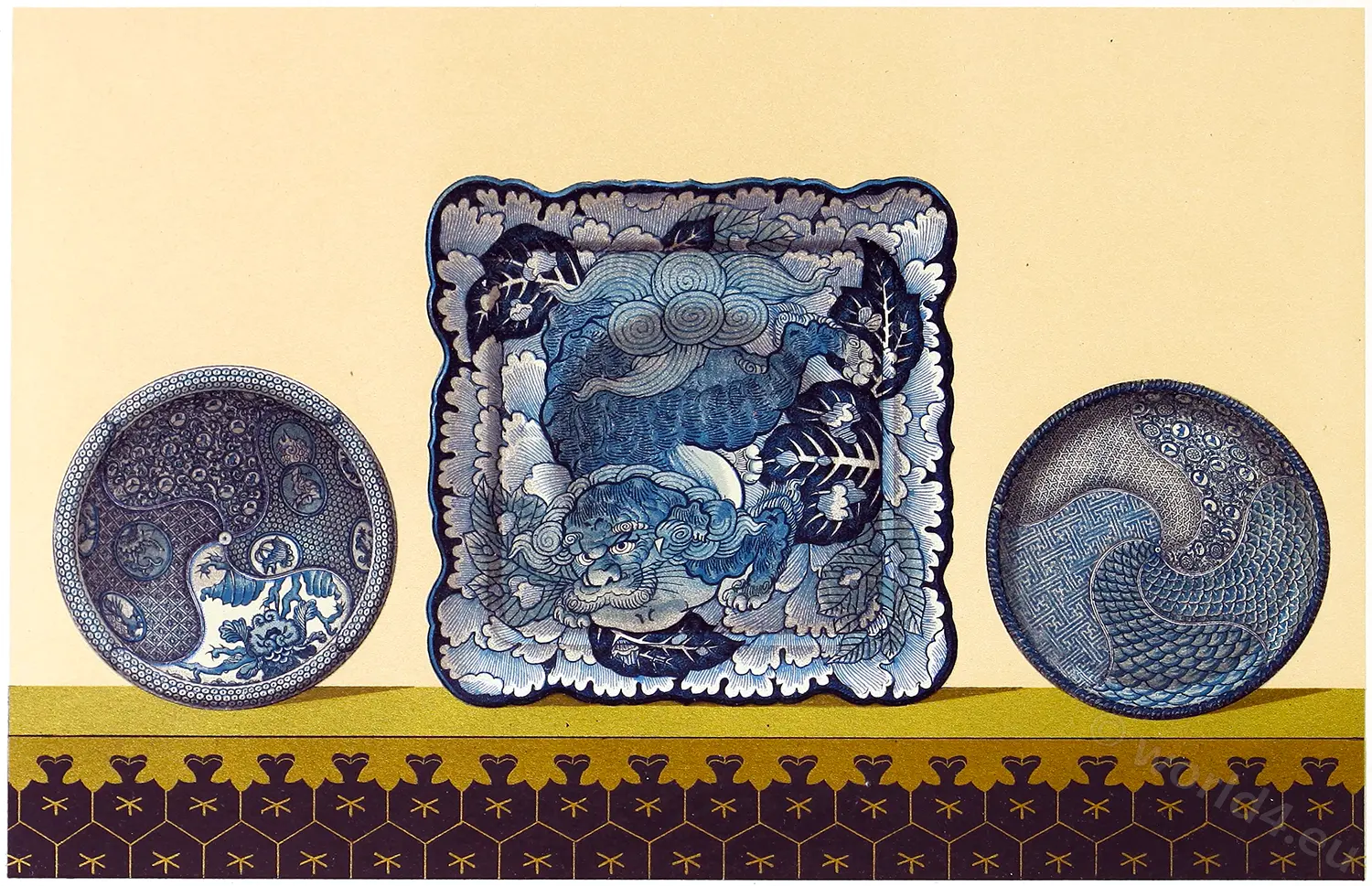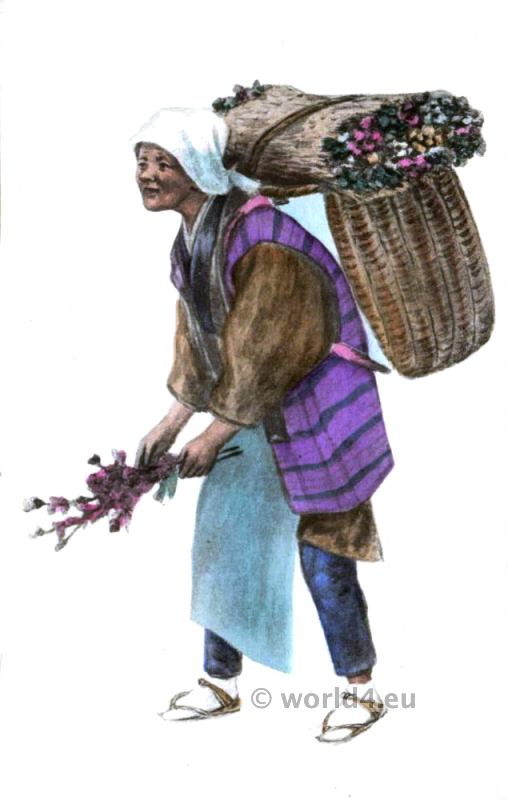Bottle made from old Arita porcelain
by George Ashdown Audsley.
Triple gourd-shaped Bottle, of old Arita porcelain, beautifully decorated with floral sprays. The disposition of the ornamentation upon this piece is worthy of study. On the lowest and largest bulb the flowers and leaves are placed close together, and rise vertically, giving the idea of strength and supporting power; the middle bulb is also treated richly, but with sprays disposed spirally, giving the idea of lightness and the need of support; and the top bulb is covered with light branches of red time, pendant from the neck-band like the branches of a drooping tree seen against the clear sky. It would, probably, be impossible to decorate such a complex shape as is here presented in a way more satisfactory to the eye, or more sound from a decorative art point of view. Height, 28 inches.
In the Royal Keramic Collection, Dresden.
Hizen.
THE Province of Hizen is situated in the north-west of the island of Kiusiu, and, with the exception of the small island of Hirado and the Goto group, is the most westerly portion of the empire of Japan. Its capital, Saga, is a town of considerable importance, situated at the northern extremity of the Gulf of Simabara. Hizen has two ports open to trade: that of Nagasaki, in whose waters the fan-shaped island of Deshima, constructed for the Portuguese, shortly afterwards became the permanent factory of the Dutch company, and hence has for centuries been familiar to European ears; and that of Imari, from which large quantities of the ceramic manufactures of the province have been shipped.
Both these ports give their names to porcelain exported from thence—names which are, however, incorrectly applied, no wares being manufactured in either place. Porcelain appears to be made in various districts of Hizen, including the island of Hirado. The wares shipped from Imari are made chiefly in the town of Arita and in the adjoining kilns of Ichinose, Ilirose, Nangawara, Ohotaru, Hokao and Kuromouda; the productions of all these factories, and of the neighbouring ones of Ohokawachi, Mikawachi, Shida, Ko-Shida and Yoshida are known by the general name of Imari ware. From the port of Nagasaki nearly all the varieties of the wares produced in the province are exported.
The process of making porcelain was greatly improved by a Corean potter named Risamper, who settled at Arita, at the close of the sixteenth century, and discovered the suitable material in the neighbourhood. We think there is good reason to suppose that the manufacture of artistic pottery and porcelain in Japan dates from this period, and we now proceed to trace its progress and the introduction of the wares into Europe.
The three districts of Japan which produce the best blue and white porcelain are Arita in Hizen, Seto in Owari, and Kioto in the province of Yamashiro. At Arita, large and important pieces are frequently made; for instance, the Japanese Court at the Vienna Exhibition of 1873 contained several contributions from its factories, in the shape of vases and temple lamps, ranging from five feet to six feet six inches high, which were perfectly sound throughout.
Source: Keramic art of Japan by George Ashdown Audsley (1838-1925); Lord James Bowes (1834-1899). London : H. Sotheran & co. 1881.

